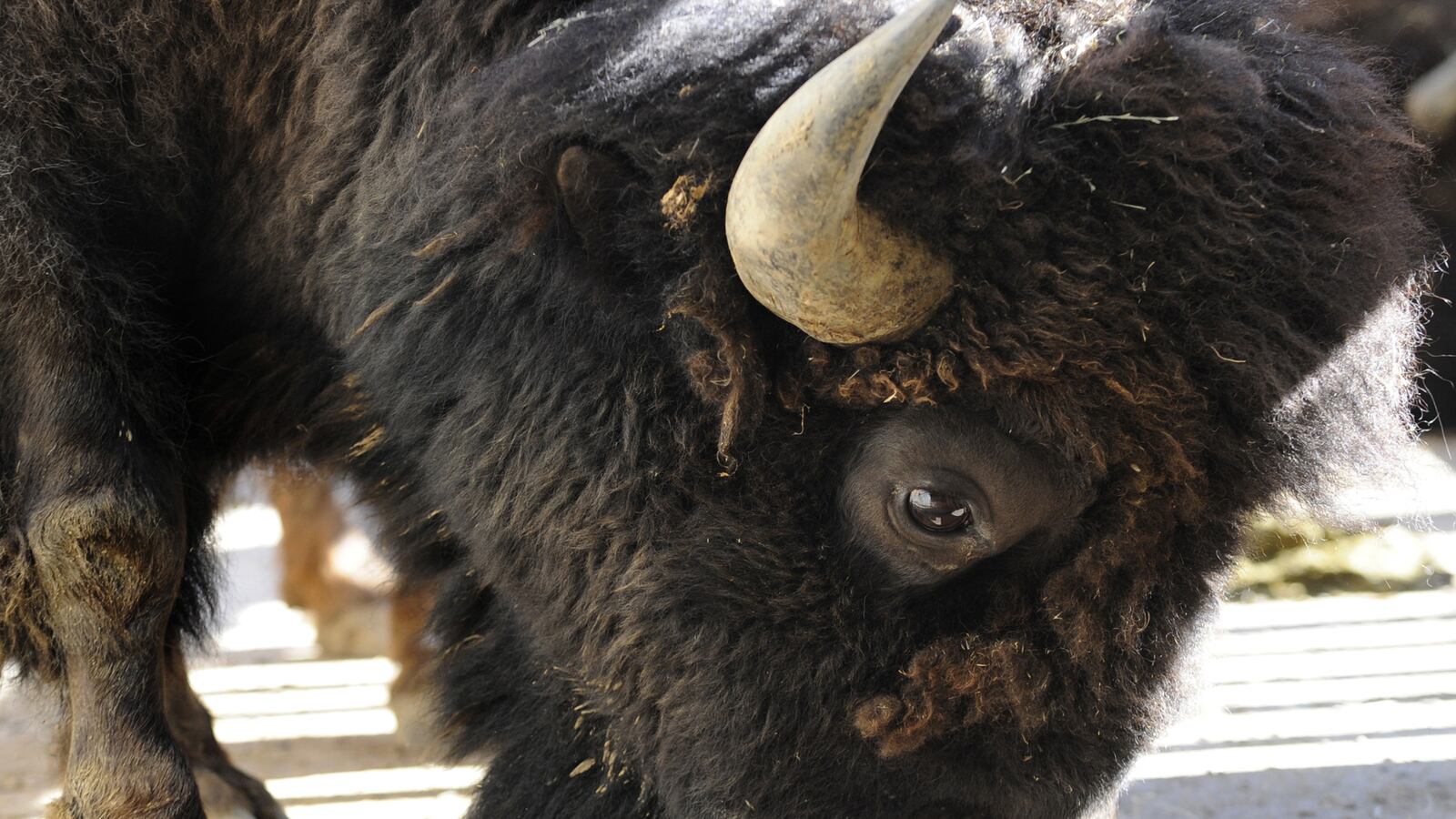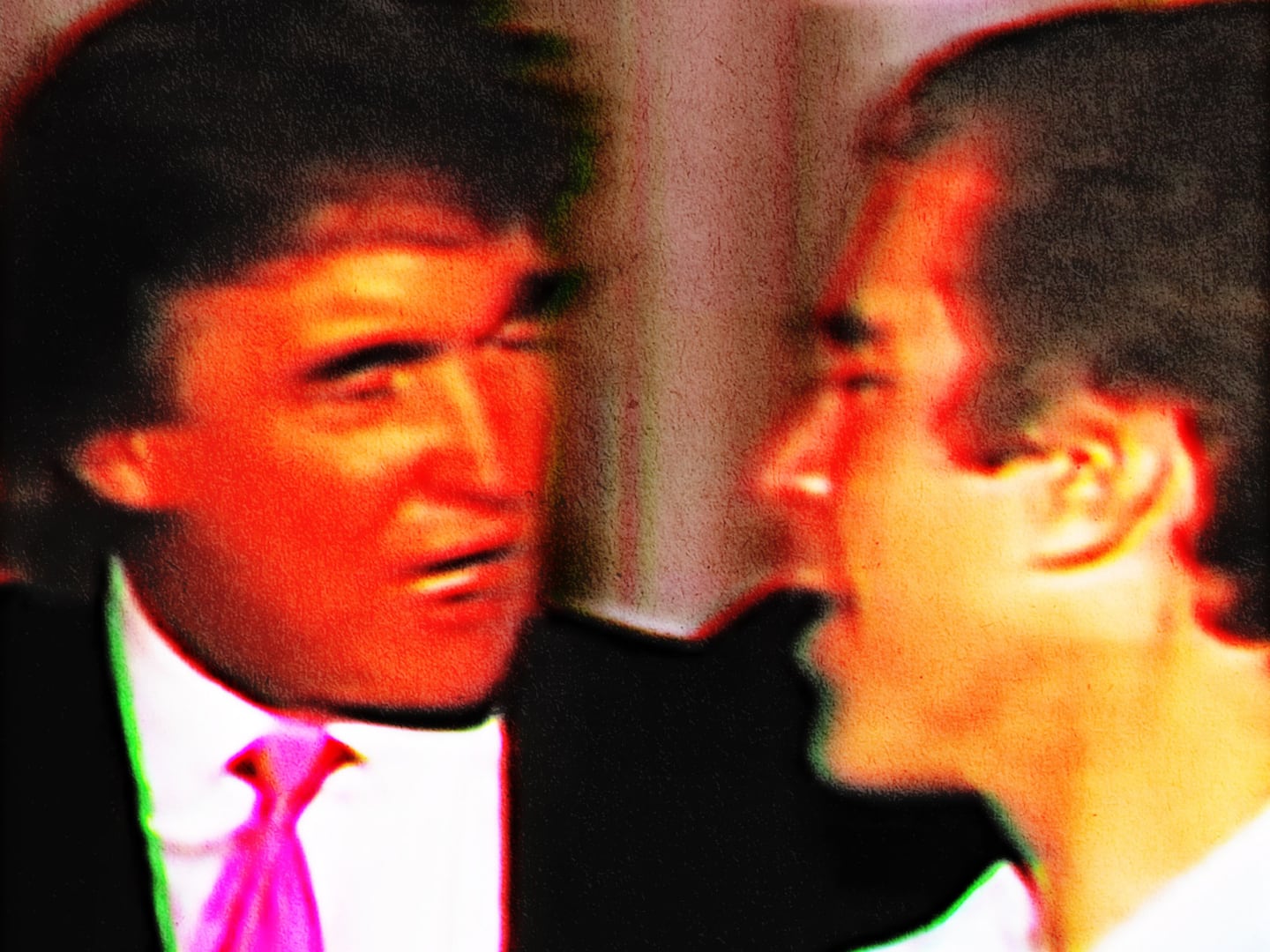At one time, there were as many as 60 million buffalo roaming North America, so many that they became the symbolic representation of our westward expansion. Unfortunately for them, they were also a popular food source for a rapidly expanding army of settlers, profitable for traders, and relatively easy to capture and kill. By 1884, there were only around 325 of the beasts left in the wild, with just 25 of them in Yellowstone National Park.
Now Yellowstone’s scruffy flock of horned ungulates runs at around 5,000, at least as of last weekend. After yesterday, the number could be dramatically lower.
On Monday, members of the National Park Service, Forest Service, Montana Department of Fish and Wildlife, and other agencies rounded up between six and nine hundred buffalo from a closed area, and will soon send them to be systematically slaughtered.
It’s an annual program that has been going on for years, part of an agreement between the park and the state of Montana to keep bison populations in the park “manageable” in order to prevent the spread of brucellosis between bison and cattle. It’s also, though this is less talked about, to help prevent overgrazing—that is, to stop the wild buffalo from eating vegetation on public land that private ranchers feel should be saved for their for-profit cattle herds.
It’s become a very controversial situation, as animal rights groups and those with a soft spot for our nation’s heritage cry foul at the massacre, which they feel is unnecessary and paranoid.
While it’s technically true that brucellosis—a bacterial infection that can affect humans via unpasteurized milk and dairy products and cause joint pain, fever, and extreme fatigue—can technically be passed between bison and their domestic cattle cousins, there is no documented case of this happening. Not ever. That said, roughly half of the park’s bison test positive for brucellosis.
"It is only theoretically possible based on a lab test," Animal Legal Defense Fund lawyer Stefanie Wilson told The Dodo.
"The brucellosis argument has been discredited so much that they're shifting their argument and saying there are surplus bison that need to be killed," Dan Brister, executive director of the Buffalo Field Campaign, told the Associated Press. "You never hear anyone talking about surplus elk (who also carry brucellosis) or other wildlife species.”
And it’s not just animal rights groups and the bleeding hearts who don’t like this situation.
“Many people are uncomfortable with the practice of culling bison, including the National Park Service,” Yellowstone National Park Superintendent Dan Wenk said in a statement. “The park would gladly reduce the frequency and magnitude of these operations if migrating bison had access to more habitat outside the park or there was a way to transfer live bison elsewhere.”
According to the park’s agreement, they are supposed to keep the herd at around 3,000 animals. And while Wenk admittedly doesn’t love the process, he’s a man of his word.
"Doing this is difficult, but we do it because it’s the current agreement that we have with the states and we will continue to do it and we will continue to manage with respect for the agreements that we have until those change."
Culling the herd can happen in two ways—via the round-up, after which the bison are sent to be slaughtered and their meat and hides given to local Native American tribes; and via hunting the shaggy beasts when they meander beyond the park’s protective borders.
Last month, Montana Fish, Wildlife, and Parks Regional Supervisor Sam Sheppard told Montana Public Radio that traditional hunting is the state’s preferred population management process for wildlife. But sometimes that just isn’t enough.
“There’s only so many that, successfully, we’ve been able, over the last couple of years, to harvest via hunting,” he said in the interview.
And so, starting yesterday, hundreds of the animals have been corralled, destined for something far different from Yellowstone's scenic vistas and the chance to gore selfie-loving tourists.
“It is hard to watch,” Rick Wallen, Yellowstone’s lead bison biologist told the Washington Post last year. “But we do it as quickly and efficiently as possible.”
It may be quick and efficient, but it's not inexpensive—the cull runs with a price tag of around $2 million, and, thus far, shows no sign of being very effective in the long term. A February report by Yellowstone officials said the bison population “is prolific and has recovered rapidly” as the park’s management plan “underestimated bison reproduction and survival rates.”
There are other options on the table, however. Wenk is interested in the possibility of transferring disease-free buffalo to other public or tribal lands—relocation instead of annihilation.
Other concerns have been raised about the round-up beyond the buffalo body count. Some fear the ruckus from an influx of helicopters, horses, and all-terrain vehicles can cause major disruption to other wildlife. This will be better documented during the 2016 cull, as, thanks to a lawsuit from conservation groups, a limited number of select journalists will be allowed to view the proceedings for the first time, although only on four different days to be selected by the park.
It’s not a happy compromise.
“This is wholly inadequate for a culling operation that takes place over several weeks,” Christopher Ketcham wrote in a New York Times op-ed. “We’re skeptical about how much we’ll be allowed to see.”
Ultimately, the cull comes down to the issue of re-wilding the west, something that many long-term ranching families, who carved out their plots against the threat of wild animals preying on their flocks, are opposed to. The reintroduction of wolves has met similar resistance, Kit Fischer of the National Wildlife Foundation noted in the Washington Post story.
“It’s more about social tolerance than biological limits,” he concluded. “Ultimately, it’s a question of how much wildlife humans are willing to accept on private lands.”
The Buffalo Field Campaign’s stance is harder, however.
"We think the culling plan is horrible,” stated Buffalo Field Exchange’s Stephanie Seay. “We’re dealing with an ecologically extinct native wildlife species. There is zero reason for any culling whatsoever."






